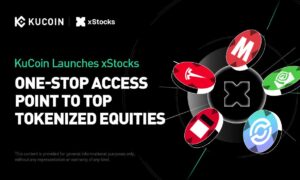Introduction:
ETF trading has become an increasingly popular investment instrument in recent years. Exchange-traded funds (ETFs) provide investors with the opportunity to gain exposure to a broad range of markets and sectors without having to purchase individual stocks or mutual funds. ETFs provide a simpler, more cost-effective way to diversify a portfolio and gain access to a variety of financial instruments in one transaction. This article will provide a comprehensive overview of what you need to know about ETFs to trade using an ETF trading broker, from how ETFs are created and how they are purchased to understanding the various associated risks, fees, and strategies.
What Are ETFs?
ETFs are funds that trade like stocks, but are comprised of multiple assets, such as stocks, bonds, commodities, and more. An ETF holds a basket of assets and operates similarly to a mutual fund, but with the added advantage that the ETF can be traded on a stock exchange just like a single stock. ETFs are generally traded and priced in real time, and investors can buy or sell shares anytime during the trading day. Consequently, ETFs provide more liquidity and flexibility than mutual funds as investors can place orders for ETFs at a precise and predetermined price, known as market orders, or set limit orders to buy and sell at specified prices. Additionally, ETFs typically enjoy lower expenses costs than mutual funds because of their passive management style and require little to no additional manager-level oversight.
How ETFs Are Structured
ETFs are organized by a market maker, who creates and issues them to investors. This market maker manages the fund and is responsible for creating, pricing, and trading the ETF. After the ETF is created, it is listed on a stock exchange, like the NYSE or NASDAQ. Once the ETF is listed, investors can purchase or sell it just like a single stock. ETFs are structured to track various indexes, such as the S&P 500 and DOW Jones, and can also track a specific sector or industry. The performance of an ETF is determined by its underlying assets and, in some cases, by derivatives such as futures and options.
Advantages of ETFs
ETFs offer investors a number of important benefits. Most notably, ETFs are liquid, meaning investors can easily buy and sell them at a predictable price. Additionally, ETFs are cost-effective compared to traditional mutual funds, as they have lower fees associated with them. Finally, ETFs provide diversification, as they can hold a wide range of different assets within the same fund. This makes it easier for investors to spread out their risk and create a diversified portfolio without having to make time-consuming individual stock purchases.
Types of ETFs
ETFs come in a variety of different forms, ranging from broad-based funds that track certain markets to more specialized funds that track specific sectors or industries. Broad-based ETFs include those tracking indexes such as the S&P 500 or DOW Jones, as well as those tracking entire markets such as the US or Europe. Specialized ETFs can be based in a particular sector, such as technology or energy, or can focus on specific industries, such as biotechnology or retail. Additionally, some ETFs are designed to target specific countries, such as China or Brazil, or specific asset classes, such as commodities or bonds.
Purchasing and Trading ETFs
ETFs are purchased and sold in the same manner as stocks. Investors can purchase ETFs through a broker or buy and sell them on a public stock exchange at their own discretion. When purchasing ETFs through a broker, the investor makes a purchase agreement with the broker and instructs the broker where to purchase the desired ETF. On the other hand, when investing in ETFs through a stock exchange, the investor can buy the ETF using either market or limit orders. Market orders are placed at the current market price, while limit orders are placed at prices the investor believes to be advantageous.
Risks of ETF Trading
As with any investment, ETFs come with certain risks. ETFs can be subject to market risk, as ETF prices may rise and fall in accordance with the prices of underlying assets or the stock markets within which they are traded. Additionally, investing in ETFs carries counterparty risk, as the fund must be managed by a reliable and trusted party. Moreover, ETFs can be subject to tracking risk, which is the risk that the fund may not accurately track its underlying assets or indexes.
Tips for Successful ETF Trading
Successful ETF trading requires a strong understanding of the market and the ETFs in which an investor is interested. Investors should research ETFs thoroughly before investing and should always be aware of the current market conditions and the associated risks. Investors should also consider diversifying their ETF investments and gradually adding to their positions instead of investing a large sum of money at one time. Finally, investors should be aware of the fees associated with ETFs and should look for funds with the lowest expenses.

































